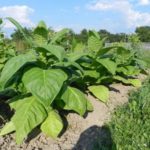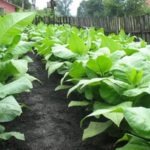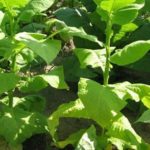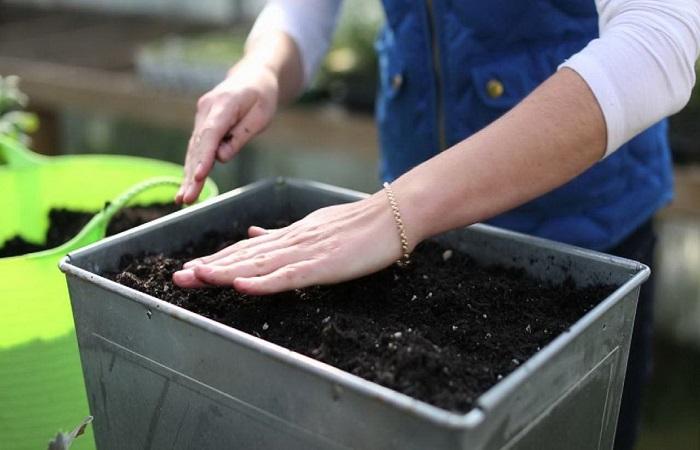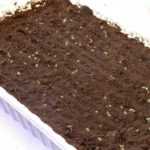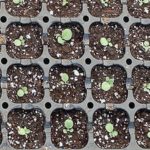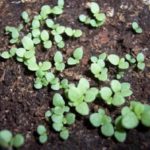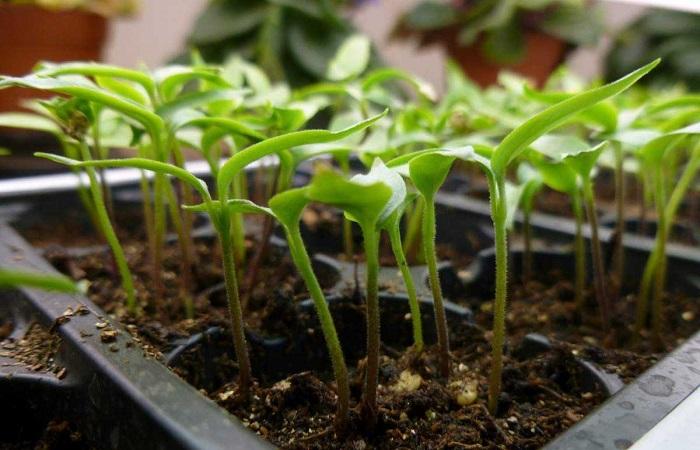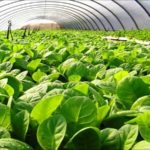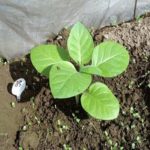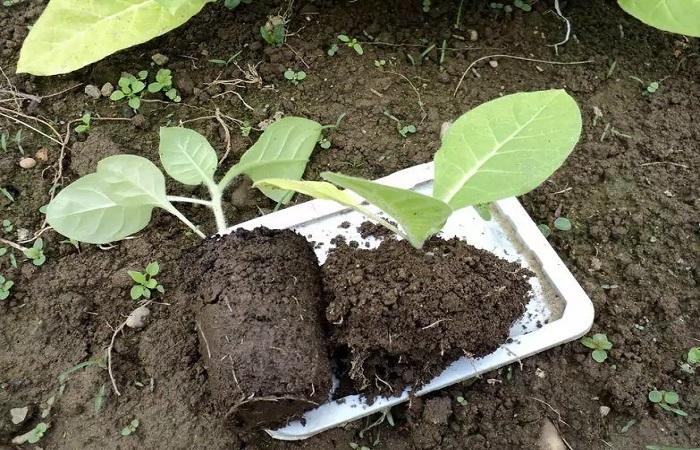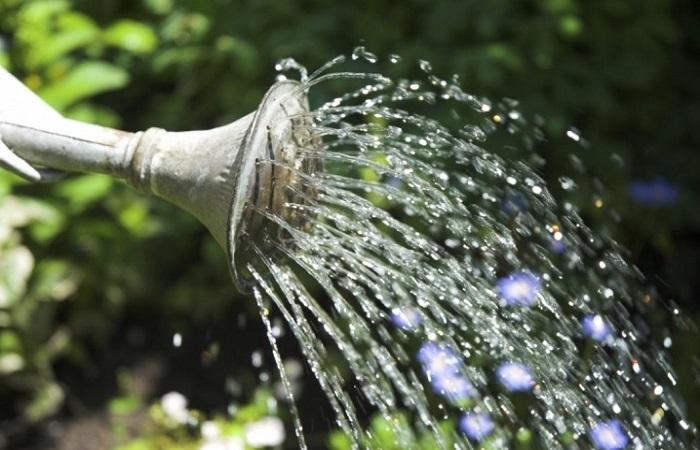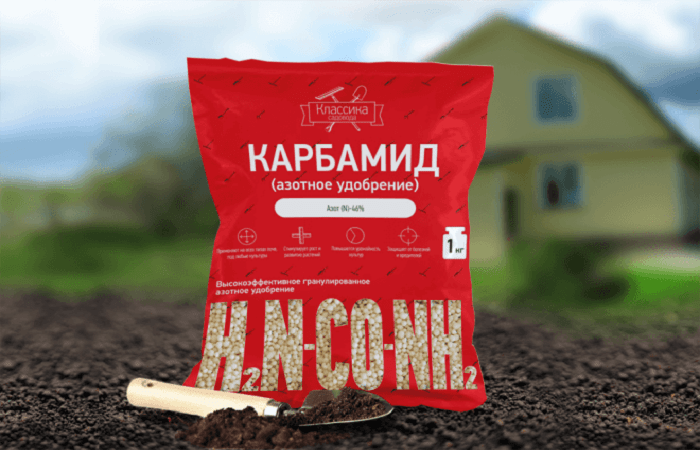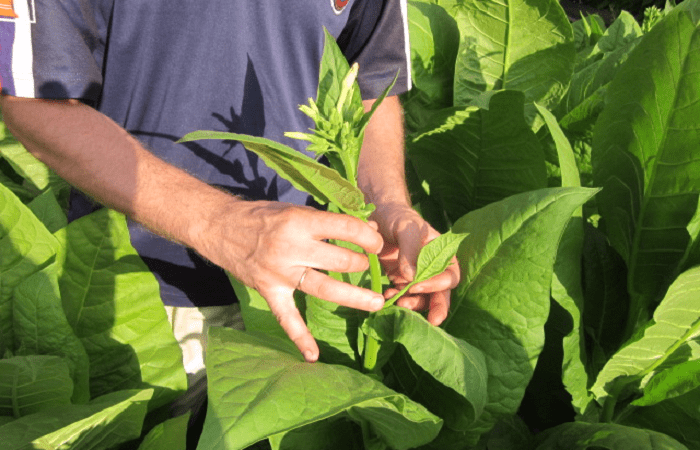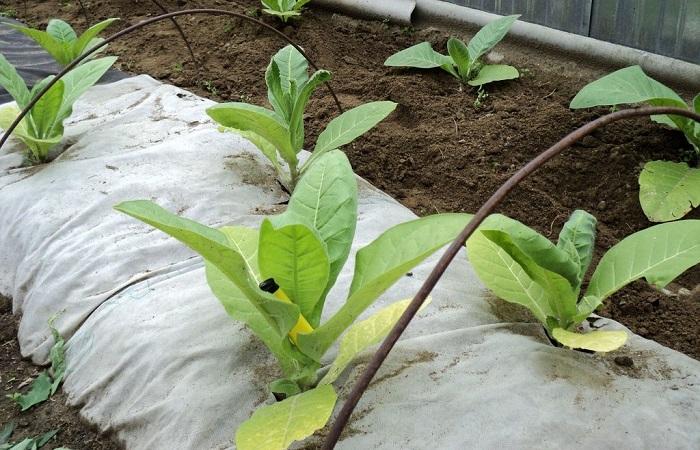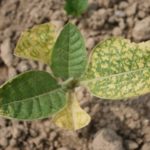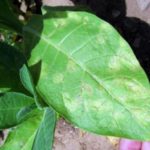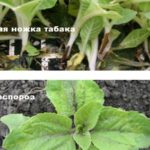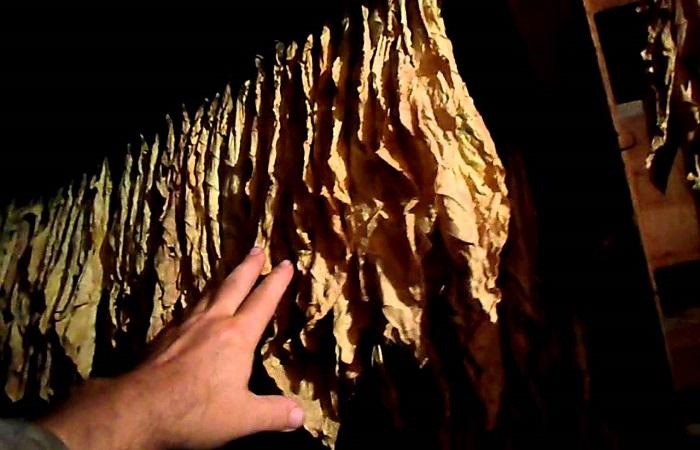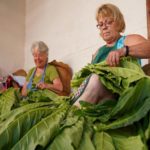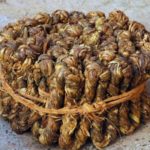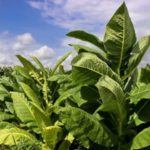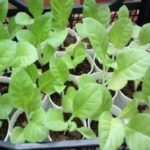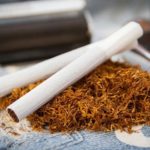When growing tobacco, it is important to adhere to certain rules of agricultural technology. This plant loves warmth and moisture. Therefore, it is recommended to grow it in the southern regions, which have a hot climate. In the middle zone, the crop should be planted in greenhouses. It is important to ensure sufficient watering, fertilization, and loosening. It is imperative to prevent diseases and pest attacks.
- General description of the plant
- Popular varieties of tobacco
- Planting crops for seedlings
- Priming
- Capacities
- Preparation of planting material
- Agricultural technology for sowing seeds for seedlings
- Seedling care
- Watering and fertilizing
- Picking
- Which is better: open ground or greenhouse?
- Transplanting seedlings into open ground
- Further care
- Watering and fertilizers
- Loosening
- Stepsoning
- Topping
- Diseases and pests
- How to properly collect and dry tobacco
General description of the plant
Tobacco is an annual herbaceous plant that grows up to 3 meters in height. At the same time, the stem of the crop has almost no branches and looks straight. The bushes are characterized by whole alternate leaves, which can be narrowly lanceolate or broadly ovate. One bush may have 16-60 leaves.
The lower leaves are decurrent and have a semi-petiolate base. On top they have a resinous fleecy surface. Tobacco is characterized by reddish or pink funnel-shaped flowers that form narrow paniculate inflorescences.
In terms of time, tobacco has been grown for quite a long time. Therefore, it is necessary to plant the plant in February or early March. The culture needs long daylight hours. Therefore, it is planted in open ground at the end of May or beginning of June.
Popular varieties of tobacco
Today there are many varieties of tobacco. For self-cultivation, it is recommended to give preference to local varieties. The most popular options include the following:
- Trebizond Kubanets - the growing season from planting seedlings to harvesting is 103-134 days. The bushes, on average, bear 27 technically suitable leaves. The nicotine volume is 2.6%.
- Trapezond 92 – the variety is resistant to damaging factors and viral pathologies. The crop is characterized by a short growing season. The leaves are broken, on average, after 98 days.
- Samsun 85 – the crop is characterized by intensive ripening and medium ripeness. From the moment of planting to harvest, about 105-110 days pass. From 1 bush it is possible to obtain 50 technically ripe leaves.
- Anniversary new 142 - the growing season from the moment of planting seedlings to harvesting is 78 days. 82 days pass until the last withdrawal. The leaves contain 2-2.1% nicotine. The variety is characterized by complex resistance to tobacco diseases.
- Holly 316 – is a late-ripening form, which is characterized by intensive leaf maturation. The plant is characterized by low nicotine content. From planting to harvest, 120 days pass.
Planting crops for seedlings
Seeds of smoking tobacco are characterized by excellent germination, which lasts for many years. But when growing seedlings, it is important to take into account some features.
Priming
Tobacco requires loose soil. Therefore, to germinate the seeds of this plant, you need to purchase ready-made soil for flowers and garden crops. Such mixtures include peat, which helps make the soil looser.
When preparing the soil yourself, you should take the following components:
- 2 parts humus;
- 1 part sand;
- 2 parts of garden land.
Capacities
It is recommended to use a large container for growing seedlings. Most often this is done in greenhouses or greenhouses. When planting tobacco seeds at home, you can use a seedling box or a large pot. If the plantings are too dense, you need to plant the plants.
Preparation of planting material
When growing tobacco by seeds, planting work must be carried out at the end of February or at the beginning of March. Before planting the grains, they need to be kept in a damp cloth for 24 hours until they swell. In this case, it is recommended to add a couple of drops of tartaric acid to the water. It is also permissible to use several crystals of potassium nitrate for this purpose.This method will help speed up the appearance of sprouts by a week.
When the seeds swell, they need to be washed, dried and placed in a damp cloth. On the 3-4th day, small sprouts will appear on the grains.
Agricultural technology for sowing seeds for seedlings
To grow smoking tobacco at home, you need to wait until 2/3 of the seeds have germinated. At this stage, they need to be dried, carefully mixed with dry, disinfected sand and planted. It is recommended to grow the crop in well-moistened soil, which consists of 3 parts humus and 1 part sand. The seeds should be sprinkled with substrate on top - its thickness should be 7-8 millimeters.
Seedling care
To get strong and high-quality seedlings, they need to be provided with proper care. It must be comprehensive.
Watering and fertilizing
The container with crops must be kept at a temperature of +23-28 degrees. In order for tobacco to develop normally, it needs to be watered almost every day. In this case, the seedlings need to be ventilated 2 times a day. When 2 true leaves appear, the temperature must be reduced to +20 degrees. In this case, it is recommended to increase the amount of water when watering.
To feed tobacco seedlings you need to use 30 grams of ammonium nitrate and 20 grams of potassium chloride or sulfate. These substances must be mixed with 10 liters of water.
A solution of chicken manure is perfect for organic matter.To make it, it is recommended to take 1 kilogram of fertilizer, mix it with a bucket of water and leave it to ferment for 10-12 days, stirring occasionally. Then you need to strain the infusion and add 4-5 parts of water.
Picking
If the plantings are very dense, tobacco needs to be pruned. This is recommended to be done at the stage of appearance of 3-4 leaves. Subsequently, you need to add fertile soil under the bushes 2-3 times.
Which is better: open ground or greenhouse?
To grow strong plants, it is important to choose the right agricultural technology. In the south, tobacco can be planted directly in open soil. In regions with continental and temperate continental climates, the plant must be planted as seedlings in a greenhouse.
It is important to consider that tobacco comes from the humid, hot tropics. Therefore, it is better to grow shag in central Russia. This type of tobacco is more resistant to temperature fluctuations and moisture deficiency. In addition, the vegetation cycle of shag is noticeably shorter and takes no more than 2.5 months. However, some varieties of tobacco will require 3.5 months to fully ripen.
Transplanting seedlings into open ground
To plant tobacco in your dacha, it is important to follow a number of recommendations. In this case, the planting scheme is of particular importance. To move seedlings into open ground, you first need to make furrows and holes in the soil. Compliance with the timing of planting work is of no small importance. So, in the Moscow region it needs to be planted later than in the south.
When growing tobacco for smoking in the garden, it is recommended to plant the bushes vertically, sprinkling the root system with moist soil. The top of the plant must be covered with dry soil to avoid rapid evaporation of moisture.
Further care
In order for the growing of a plant to be successful, it is important to provide it with high-quality and complete care.
Watering and fertilizers
When growing tobacco in a summer cottage, it needs to be watered literally 3 times. In this case, it is recommended to use approximately 6 liters of water for 1 bush.
When watering, it is important to consider the appearance of the plants. If the leaves wither and turn yellow, the tobacco needs watering. However, excess moisture provokes the death of plantings. Therefore, it is important to remember a sense of proportion.
During the growing season, tobacco requires 3-4 feedings. In the first half of the growing season, it is recommended to apply nitrogen fertilizers. Then it is permissible to use combined fertilizers or preparations based on phosphorus and potassium.
It is important to remember that you should not overuse fertilizers. An excess of each element can lead to negative consequences. For example, an excessive amount of phosphorus will cause early aging of greenery. At the same time, moderate use of the substance will improve flowering and speed up its onset. Excess potassium will lead to an unpleasant tobacco smell. This will negatively affect the quality of the product.
Compliance with the timing of fertilizer application is of no small importance. It is recommended to feed the bushes for the first time a couple of weeks after planting the seedlings in the soil, the second time when the plants reach a height of 20 centimeters, and the third time during flowering.
Loosening
In order for tobacco to develop normally, it is important to properly care for it after watering. Loosening the soil is considered a mandatory procedure. Thanks to this, it is possible to destroy the soil crust and destroy weeds.
Stepsoning
Each tobacco leaf has a stepson. It needs to be pinched when it reaches 2 centimeters. If you do this earlier, the stepson will grow up again. If you miss the deadline, the leaves will not receive the required amount of nutrients.
Topping
This term refers to the removal of inflorescences. Topping is carried out to improve the growth of bushes and improve their quality. If the tobacco is characterized by rapid development, topping should be done later, when the inflorescences have opened by 1/3. With slow growth, the procedure is carried out early - at the stage of the appearance of the first flowers.
It is recommended to perform topping with gloves. When the stems are broken, a sticky layer forms that burns your hands. At the same time, it is forbidden to postpone the procedure, since this will make the tobacco less strong and worsen its taste.
Diseases and pests
Tobacco may suffer from the development of such pathologies:
- Black leg - accompanied by lodging and death of seedlings. At the same time, the base of the stems becomes thinner and rots. The affected surface becomes covered with a white or brown coating. In this case, pathogens remain in the soil.
- Powdery mildew - develops immediately after planting seedlings in the soil. In this case, the lower leaves become covered with spots with a powdery coating. After this, it becomes continuous and affects the upper leaves.Fungi overwinter on plant debris. The disease negatively affects photosynthesis processes and provokes plant depression.
- Black root rot - in most cases it affects seedlings, but sometimes adult bushes also suffer. Affected plants wither, turn yellow and dry out. The roots turn brown or black and often die.
- Mosaic - in this case, light green spots appear on the leaves of plants. Subsequently, these areas die off.
- Bacterial grouse - in this case, oily or weeping spots form at the ends of the leaves. In wet weather they rot and the entire bush becomes infected. The foliage of grown plants becomes covered with round chlorotic spots. They merge with each other, forming areas of dead tissue.
Among the pests, tobacco can suffer from the following insects:
- Peach aphid – absorbs the juice of tobacco leaves and spreads dangerous diseases. Among them, it is worth highlighting cucumber mosaic and white mosaic. Aphids provoke depletion of bushes, slow down their development, reduce yield parameters and negatively affect the taste of tobacco. To kill aphids, drugs such as “Metathione” and “Rogor” are used. For prevention, it is important to systematically weed the beds and inspect the tobacco foliage every day.
- Tobacco thrips are small pests that bite through tobacco leaves and absorb its juices. As a result, the raw materials become of lower quality. Damaged leaves do not ferment well and become brittle after drying. In addition, thrips spread viral diseases. To cope with pests, bushes need to be treated with insecticides in a timely manner.
- Wireworms, or drupes, are the hard larvae of click beetles.They live in the ground, damage the root system and make passages in plant stems. Coping with such pests is very problematic. Therefore, it is important to pay attention to prevention. If wireworms are detected in the area before planting tobacco, it is necessary to treat the soil with Hexachloran dust at a concentration of 20%. The next day, you need to pollinate the soil with Metaphos dust and fence the area to 3-4 centimeters.
How to properly collect and dry tobacco
When the tobacco foliage stops developing, you can begin harvesting it. At this stage, the raw material becomes most dense. Ripe tobacco leaves have a lighter color. It is recommended to harvest in the evening. In this case, it is worth starting with the lowest and largest leaves. After the middle leaves ripen, they are also removed.
The collected leaves should be dried in a dark and well-ventilated area. In this case, the temperature should be +25-30 degrees. During the drying process, the tobacco is fermented.
Fermentation refers to a change in physical characteristics due to biological or chemical influences. A natural process occurs during long-term storage. With the artificial method, the process is significantly accelerated.
It is recommended to do the following:
- Sprinkle dry tobacco leaves on both sides, fold in a stack and cover with polyethylene.
- After a day, remove the vein from each leaf, assessing the degree of humidity.
- Cut the finished leaves into strips.
- Place tobacco in glass jars, filling them to a maximum of 2/3.
- Close the containers with lids and place in the oven preheated to 50 degrees. Fermentation takes 5-7 days. The tobacco needs to be shaken periodically to get an even result.
- Pour the finished product onto a flat surface, dry slightly and store.
Growing tobacco is a fascinating process that has many features. To get strong and high-quality plants, it is important to provide them with proper care.

